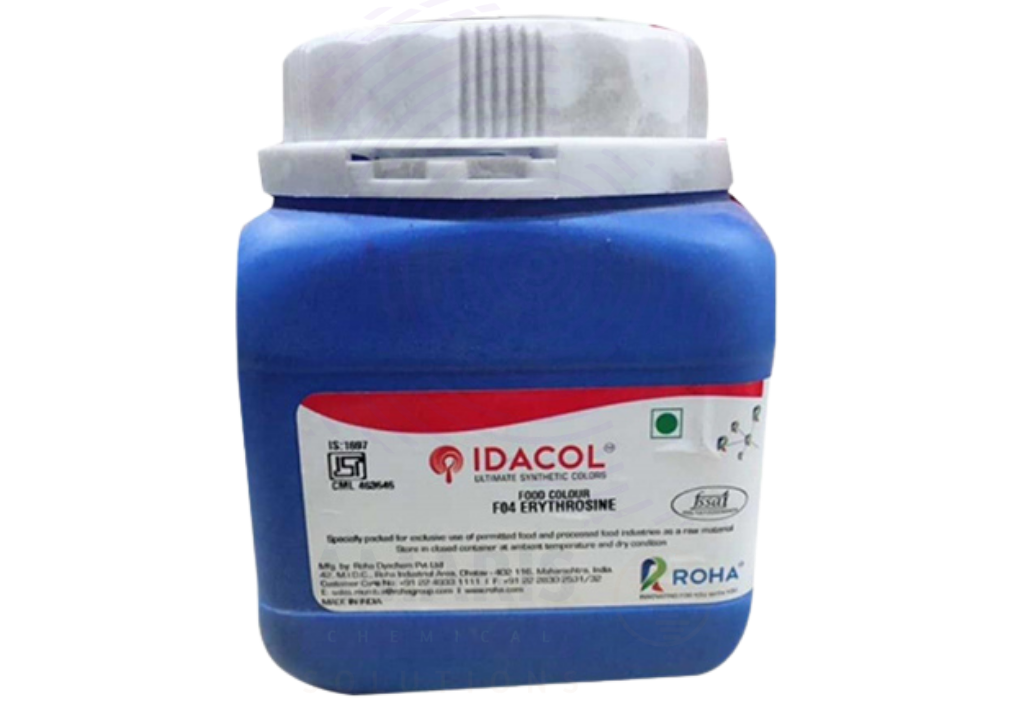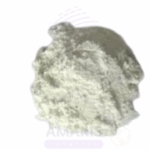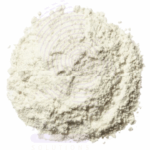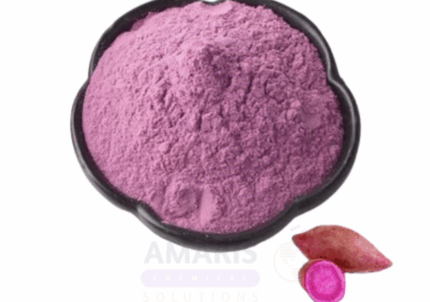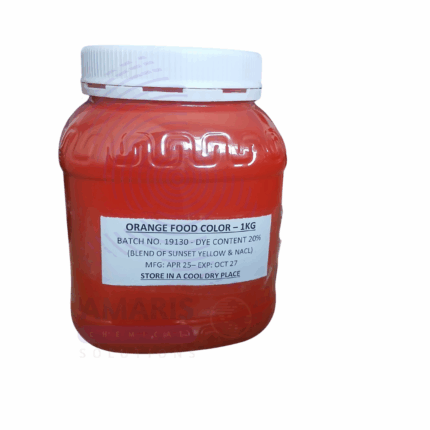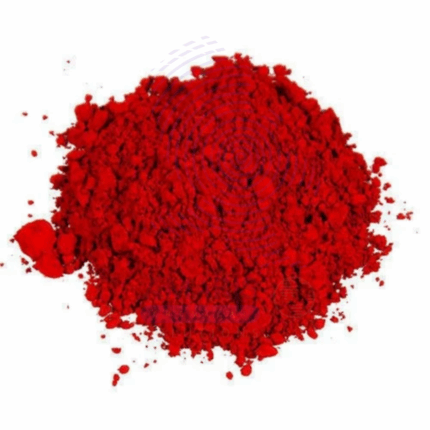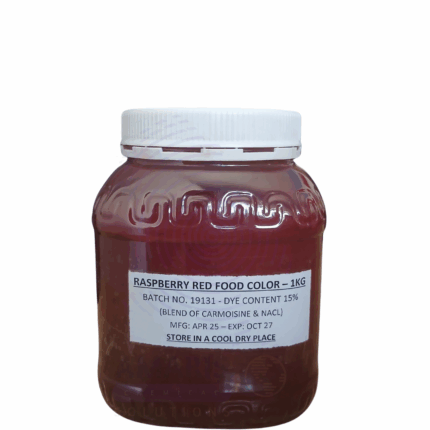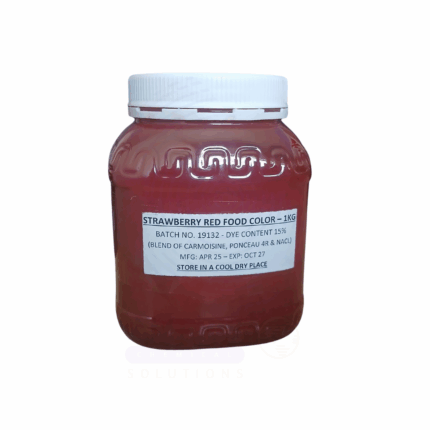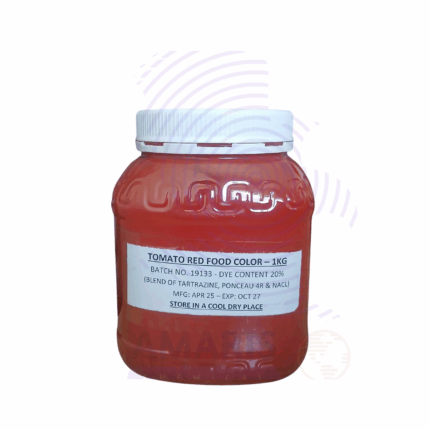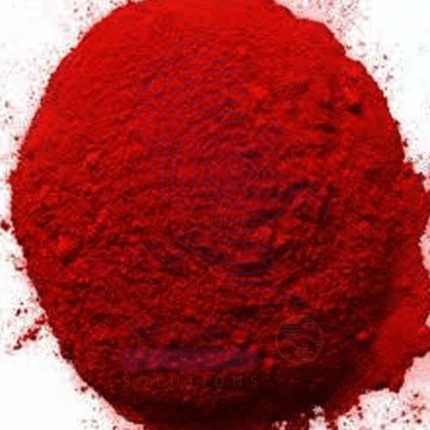Erythrosine
Whatsapp Order
Erythrosine is a high-purity red synthetic dye classified as a tetraiodofluorescein salt, commonly used as a colorant in food, cosmetics, pharmaceuticals, and industrial applications. It is a water-soluble, dark red to reddish-brown powder with excellent tinting strength and brightness. Erythrosine is valued for its vivid red color, good stability under normal conditions, and compatibility with a variety of formulation systems. It is widely used to impart red hues in candies, beverages, cosmetics, and diagnostic reagents.
Category: Colorants(food)
Tags: Biological staining, Cosmetics, Erythrosine, Food coloring, Food dye, Red food coloring
Description
Table of Contents
Toggle
Erythrosine Uses
Primary Uses
- Food Industry
- Used as a permitted color additive in foods, beverages, candies, and bakery products to provide a bright cherry-red color.
- Commonly found in processed fruits, jams, gelatin desserts, and chewing gums.
- Enhances visual appeal and consumer acceptance of food products.
- Pharmaceuticals
- Employed as a coloring agent in tablets, capsules, syrups, and topical medications to improve product identification and aesthetics.
- Used in diagnostic kits and reagents for staining and tracing purposes.
- Cosmetics & Personal Care
- Incorporated in lipsticks, blushes, eye shadows, and other makeup products for vibrant red pigmentation.
- Used in hair dyes and bath products requiring red coloring.
- Industrial Applications
- Utilized in inks, paints, and coatings for coloration.
- Applied in textile dyeing for specific red shades.
- Used as a tracer dye in water treatment and leak detection.
Secondary Uses
- Biological Staining
- Applied in histology and microbiology as a stain for biological tissues and cells.
- Used in fluorescence microscopy due to its iodine content and fluorescence properties.
- Printing Inks
- Added to printing inks for packaging and decorative printing requiring bright red colors.
KEY PRODUCT FEATURES
1. Basic Identification Attributes
- Chemical Name (IUPAC): Disodium 2',4',5',7'-tetraiodofluorescein
- Common/Trade Name: Erythrosine 86%
- CAS Number: 16423-68-0
- HS Code: 3204.17.00
- Molecular Formula: C20H6I4Na2O5
- Synonyms: FD&C Red No. 3, Erythrosin B, Tetraiodofluorescein disodium salt
2. Physical & Chemical Properties
- Physical State: Dark red to reddish-brown crystalline powder
- Odor: Odorless
- Solubility: Soluble in water, insoluble in organic solvents
- Melting Point: Decomposes before melting (~300°C)
- pH (1% aqueous solution): Approximately 5.0–7.0 (neutral to slightly acidic)
- Stability: Stable under dry conditions; sensitive to strong light and oxidizing agents
3. Safety & Hazard Attributes
- Hazard Class (GHS): Not classified as hazardous but may cause eye and skin irritation
- Toxicity: Low acute toxicity; avoid ingestion in large amounts
- Exposure Limits: No specific occupational exposure limits established
4. Storage & Handling Attributes
- Storage Conditions: Store in a cool, dry, well-ventilated area away from direct sunlight and moisture
- Container Type: Sealed plastic or glass containers, moisture-proof packaging
- Shelf Life: 24 months if stored properly
- Handling Precautions: Avoid dust formation and inhalation; minimize exposure to light to prevent degradation
5. Regulatory & Compliance Attributes
- FDA Status: Approved as a color additive for use in foods, drugs, and cosmetics under regulated conditions (e.g., FD&C Red No. 3)
- REACH Registration: Registered for industrial and cosmetic use in the EU
- Food Additive Code: E127 in Europe
- Usage Restrictions: Maximum permitted levels specified by regulatory authorities; banned or limited in some countries
6. Environmental & Health Impact
- Biodegradability: Slowly biodegradable
- Ecotoxicity: Low to moderate toxicity to aquatic organisms; avoid release into waterways
- Bioaccumulation: Not expected to bioaccumulate significantly
- Carcinogenicity/Mutagenicity: Not classified as carcinogenic; some historical concerns regarding high doses but generally safe within regulated use levels
SAFETY HANDLING PRECAUTIONS
Safety Handling Precautions
PPE Required:
- Protective gloves (nitrile or latex)
- Safety goggles or face shield
- Dust mask or respirator in dusty environments
- Protective clothing or lab coat
Handling Guidelines:
- Use in well-ventilated areas or under local exhaust ventilation
- Avoid inhalation of dust and skin contact
- Prevent dust accumulation and spills
Storage Measures:
- Keep containers tightly sealed
- Store away from strong oxidizers and light sources
- Avoid moisture exposure
Hygiene Practices:
- Wash hands after handling
- Avoid eating, drinking, or smoking near handling areas
- Clean surfaces and equipment to prevent contamination
First Aid Measures
- Inhalation: Move affected person to fresh air; seek medical attention if respiratory irritation occurs
- Skin Contact: Wash thoroughly with soap and water; seek medical advice if irritation develops
- Eye Contact: Rinse eyes with water for 15 minutes; consult physician if irritation persists
- Ingestion: Rinse mouth; do not induce vomiting; seek medical attention if large amounts ingested
Firefighting Measures
- Fire Hazards: Combustible when exposed to high temperatures; may emit toxic fumes upon decomposition
- Extinguishing Media: Use water spray, foam, dry chemical, or carbon dioxide (CO₂)
- Special Precautions: Wear self-contained breathing apparatus and protective clothing when fighting fires involving erythrosine
- Decomposition Products: May emit iodine vapors, carbon oxides, and other toxic gases
Related products
Blueberry Toppings
Blueberry Toppings are sweet, fruit-based condiment preparations made primarily from blueberries, sugar, and thickening agents. They are characterized by a vibrant blue-purple color, fruity aroma, and a sweet-tart flavor profile. Typically semi-viscous with chunks or pureed pieces of blueberry, these toppings are used as finishing ingredients in desserts, breakfast foods, and beverages. Blueberry toppings may be prepared as preserves, syrups, or glazes and often contain natural flavors and preservatives to enhance shelf life and sensory appeal.
Natural Sweet Potatoes Extract
Natural Sweet Potatoes Extract is a concentrated substance derived from the roots of sweet potatoes (Ipomoea batatas) through processes such as solvent extraction, freeze-drying, or spray drying. Rich in antioxidants, vitamins (especially vitamin A and C), minerals, and natural pigments like beta-carotene and anthocyanins, this extract is valued for its nutritional benefits and vibrant natural color. It is widely used in food, beverage, nutraceutical, cosmetic, and pharmaceutical applications for its health-promoting and coloring properties.
Orange Color water soluble
Orange Color Water Soluble is a synthetic, water-soluble food-grade colorant formulated to deliver a vibrant orange hue in aqueous-based applications. Known for its excellent solubility, bright shade, and strong tinctorial strength, it is widely used in the food, beverage, cosmetic, and pharmaceutical industries. This colorant ensures consistent dispersion in water-based systems, offering high stability, good lightfastness, and compatibility with other colorants and functional ingredients. It is ideal for manufacturers seeking non-staining, non-toxic, and easily processable color solutions that meet regulatory standards for food and personal care applications.
Ponceau 4r Red Shade
Ponceau 4r red shade is a high-concentration synthetic red azo dye, widely used for imparting bright red coloration to food, textiles, and cosmetics. It exhibits excellent water solubility and strong affinity for protein fibers and various substrates. Known for its vibrant and stable red shade, Ponceau 4R is commonly applied in food coloring, textile dyeing, and cosmetic formulations. It complies with regulatory standards for approved uses in several countries.
Raspberry Red Color Water Soluble
Raspberry Red Color Water Soluble is a vibrant, synthetic dye designed for use in various industrial and laboratory applications. Known for its excellent solubility in water, it provides bright, consistent raspberry-red hues ideal for textile dyeing, food coloring, and detergent formulations. The dye exhibits good stability in aqueous systems and is compatible with multiple substrates, including fibers and liquid products. Its high coloring strength and uniform dispersion make it suitable for precise color matching in manufacturing and research environments.
Strawberry Red Color Water Soluble
Strawberry Red Color Water Soluble is a vibrant synthetic dye known for its bright red hue and excellent solubility in water. This dye is designed for a wide range of applications requiring intense and uniform red coloration in aqueous systems. It exhibits good stability across different pH ranges and temperatures, making it suitable for various industrial and laboratory uses. Due to its water solubility, it ensures easy formulation in liquid products, inks, textiles, and food-grade applications where quick dispersion and homogeneity are essential. Its compatibility with multiple substrates and processes makes it a preferred choice for manufacturers seeking consistent red pigmentation with minimal fading or bleeding.
Tomato Red Color Water Soluble
Tomato Red Color Water Soluble is a vibrant, synthetic red dye designed for excellent solubility in water-based systems. It delivers bright, consistent red hues suitable for various industrial and laboratory applications. Known for its strong tinting strength and stability in aqueous environments, this dye is commonly used in textile dyeing, inks, and coatings where water solubility is essential. The powder form allows easy dispersion and uniform coloration, making it ideal for use in formulations requiring quick dissolution and high color impact.
Tomato Red Dye
Tomato Red Dye is a synthetic azo dye prized for its vibrant, bright red coloration and excellent water solubility. It delivers consistent, vivid red shades that are stable under a variety of environmental conditions, including exposure to light, heat, and washing. This dye is extensively used across multiple industries including food and beverage, cosmetics, pharmaceuticals, and textiles. In food applications, it enhances the visual appeal of products such as beverages, confectionery, sauces, and baked goods. Its compatibility with different formulation types and regulatory approvals make it a reliable choice for cosmetic products like lipsticks, blushes, and nail polishes, as well as pharmaceutical tablets and syrups for identification and aesthetic purposes. The dye's superior performance, combined with strict adherence to safety and quality standards, ensures that it meets the requirements of manufacturers and regulatory bodies worldwide.


 Preservatives(food)
Preservatives(food) Flavor Enhancers
Flavor Enhancers Acidulants
Acidulants Sweeteners
Sweeteners Antioxidants
Antioxidants Colorants(food)
Colorants(food) Nutraceutical Ingredients (food)
Nutraceutical Ingredients (food) Nutrient Supplements
Nutrient Supplements Emulsifiers
Emulsifiers
 Collectors
Collectors Dust Suppressants
Dust Suppressants Explosives and Blasting Agents
Explosives and Blasting Agents Flocculants and Coagulants
Flocculants and Coagulants Frothers
Frothers Leaching Agents
Leaching Agents pH Modifiers
pH Modifiers Precious Metal Extraction Agents
Precious Metal Extraction Agents
 Antioxidants(plastic)
Antioxidants(plastic) Colorants (Pigments, Dyes)
Colorants (Pigments, Dyes) Fillers and Reinforcements
Fillers and Reinforcements Flame Retardants
Flame Retardants Monomers
Monomers Plasticizers
Plasticizers Polymerization Initiators
Polymerization Initiators Stabilizers (UV, Heat)
Stabilizers (UV, Heat)
 Antifoaming Agents
Antifoaming Agents Chelating Agents
Chelating Agents Coagulants and Flocculants
Coagulants and Flocculants Corrosion Inhibitors
Corrosion Inhibitors Disinfectants and Biocides
Disinfectants and Biocides Oxidizing Agents
Oxidizing Agents pH Adjusters
pH Adjusters Scale Inhibitors( water)
Scale Inhibitors( water)
 Antioxidants(cosmetic)
Antioxidants(cosmetic) Emollients
Emollients Fragrances and Essential Oils
Fragrances and Essential Oils Humectants
Humectants Preservatives
Preservatives Surfactants(cosmetic)
Surfactants(cosmetic) Thickeners
Thickeners UV Filters
UV Filters
 Fertilizers
Fertilizers Soil Conditioners
Soil Conditioners Plant Growth Regulators
Plant Growth Regulators Animal Feed Additives
Animal Feed Additives Biostimulants
Biostimulants Pesticides (Herbicides, Insecticides, Fungicides)
Pesticides (Herbicides, Insecticides, Fungicides)
 Active Pharmaceutical Ingredients (APIs)
Active Pharmaceutical Ingredients (APIs) Excipients
Excipients Solvents(pharmaceutical)
Solvents(pharmaceutical) Antibiotics
Antibiotics Antiseptics and Disinfectants
Antiseptics and Disinfectants Vaccine Adjuvants
Vaccine Adjuvants Nutraceutical Ingredients (pharmaceutical)
Nutraceutical Ingredients (pharmaceutical) Analgesics & Antipyretics
Analgesics & Antipyretics
 Analytical Reagents
Analytical Reagents Solvents(lab)
Solvents(lab) Chromatography Chemicals
Chromatography Chemicals Spectroscopy Reagents
Spectroscopy Reagents microbiology-and-cell-culture-reagents
microbiology-and-cell-culture-reagents Molecular Biology Reagents
Molecular Biology Reagents Biochemical Reagents
Biochemical Reagents Inorganic and Organic Standards
Inorganic and Organic Standards Laboratory Safety Chemicals
Laboratory Safety Chemicals Specialty Laboratory Chemicals(Special Laboratory Equipment)
Specialty Laboratory Chemicals(Special Laboratory Equipment)
 Demulsifiers
Demulsifiers Hydraulic Fracturing Fluids
Hydraulic Fracturing Fluids Scale Inhibitors(oil)
Scale Inhibitors(oil) Surfactants(oil)
Surfactants(oil) Drilling Fluids
Drilling Fluids
 Dyes and Pigments
Dyes and Pigments Bleaching Agents
Bleaching Agents Softening Agents
Softening Agents Finishing Agents
Finishing Agents Antistatic Agents
Antistatic Agents
 Admixtures
Admixtures Waterproofing Agents
Waterproofing Agents Sealants and Adhesives
Sealants and Adhesives Curing Compounds
Curing Compounds Concrete Repair Chemicals
Concrete Repair Chemicals Anti-Corrosion Coatings
Anti-Corrosion Coatings
 Surfactants(cleaning)
Surfactants(cleaning) Builders
Builders Enzymes
Enzymes Solvents (Cleaning)
Solvents (Cleaning) Fragrances
Fragrances
 Electronic Chemicals
Electronic Chemicals Catalysts
Catalysts Lubricants
Lubricants Photographic Chemicals
Photographic Chemicals Refrigerants
Refrigerants Automotive chemicals
Automotive chemicals Pyrotechnic Chemicals
Pyrotechnic Chemicals
 Biodegradable Surfactants
Biodegradable Surfactants Bio-based Solvents
Bio-based Solvents Renewable Polymers
Renewable Polymers Carbon Capture Chemicals
Carbon Capture Chemicals Wastewater Treatment Chemicals
Wastewater Treatment Chemicals
 Pigments
Pigments Solvents(paint)
Solvents(paint) Specialty Coatings
Specialty Coatings Binders/Resins
Binders/Resins Additives
Additives Driers
Driers Anti-Corrosion Agents
Anti-Corrosion Agents Functional Coatings
Functional Coatings Application-Specific Coatings
Application-Specific Coatings
 Fresh Herbs
Fresh Herbs Ground Spices
Ground Spices Whole Spices
Whole Spices Spice Blends
Spice Blends Dried Herbs
Dried Herbs
 Leavening Agents
Leavening Agents Dough Conditioners
Dough Conditioners Flour Treatments
Flour Treatments Fat Replacers
Fat Replacers Decoratives
Decoratives Preservatives(baking)
Preservatives(baking)
 Plasticizers & Softeners
Plasticizers & Softeners Reinforcing Agents
Reinforcing Agents Adhesion Promoters
Adhesion Promoters Vulcanizing Agents
Vulcanizing Agents Antidegradants
Antidegradants Blowing Agents
Blowing Agents Fillers & Extenders
Fillers & Extenders Accelerators & Retarders
Accelerators & Retarders